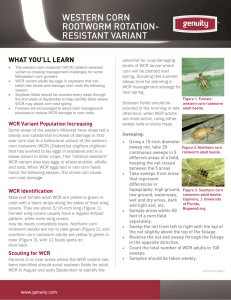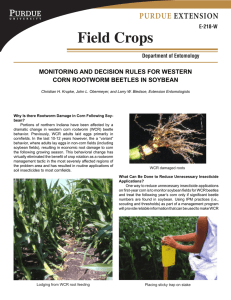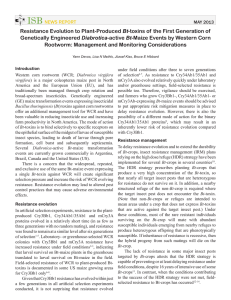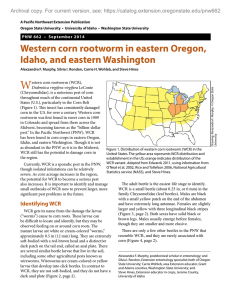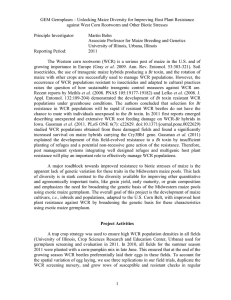Farm News 07-07-06 Randy Mudgett
advertisement
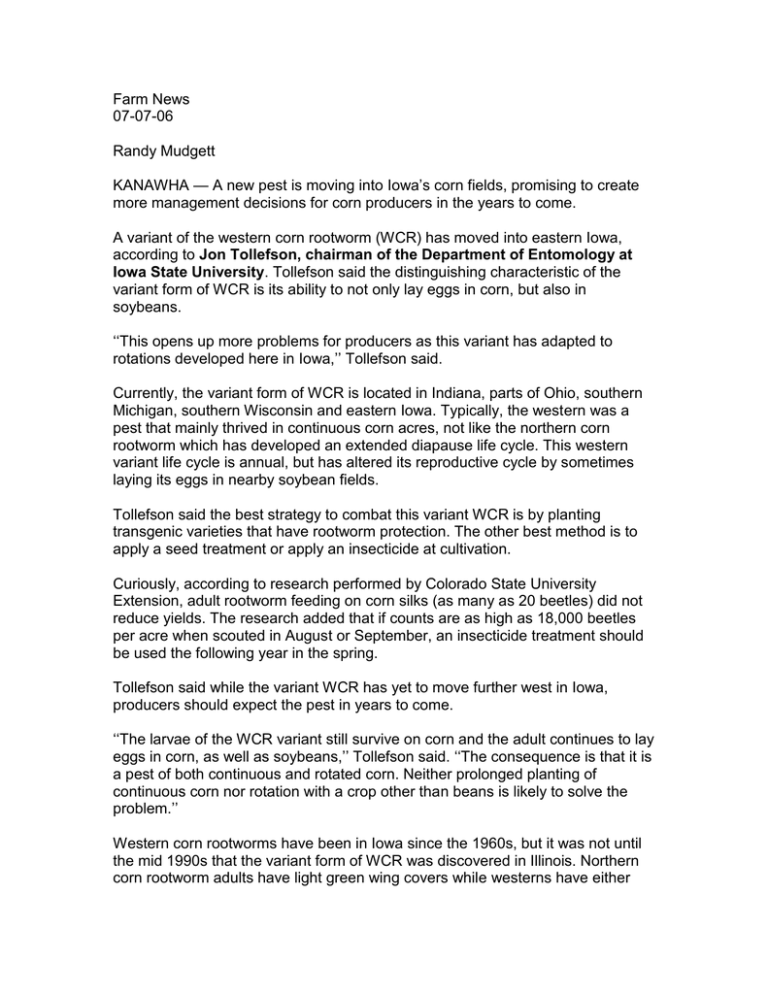
Farm News 07-07-06 Randy Mudgett KANAWHA — A new pest is moving into Iowa’s corn fields, promising to create more management decisions for corn producers in the years to come. A variant of the western corn rootworm (WCR) has moved into eastern Iowa, according to Jon Tollefson, chairman of the Department of Entomology at Iowa State University. Tollefson said the distinguishing characteristic of the variant form of WCR is its ability to not only lay eggs in corn, but also in soybeans. ‘‘This opens up more problems for producers as this variant has adapted to rotations developed here in Iowa,’’ Tollefson said. Currently, the variant form of WCR is located in Indiana, parts of Ohio, southern Michigan, southern Wisconsin and eastern Iowa. Typically, the western was a pest that mainly thrived in continuous corn acres, not like the northern corn rootworm which has developed an extended diapause life cycle. This western variant life cycle is annual, but has altered its reproductive cycle by sometimes laying its eggs in nearby soybean fields. Tollefson said the best strategy to combat this variant WCR is by planting transgenic varieties that have rootworm protection. The other best method is to apply a seed treatment or apply an insecticide at cultivation. Curiously, according to research performed by Colorado State University Extension, adult rootworm feeding on corn silks (as many as 20 beetles) did not reduce yields. The research added that if counts are as high as 18,000 beetles per acre when scouted in August or September, an insecticide treatment should be used the following year in the spring. Tollefson said while the variant WCR has yet to move further west in Iowa, producers should expect the pest in years to come. ‘‘The larvae of the WCR variant still survive on corn and the adult continues to lay eggs in corn, as well as soybeans,’’ Tollefson said. ‘‘The consequence is that it is a pest of both continuous and rotated corn. Neither prolonged planting of continuous corn nor rotation with a crop other than beans is likely to solve the problem.’’ Western corn rootworms have been in Iowa since the 1960s, but it was not until the mid 1990s that the variant form of WCR was discovered in Illinois. Northern corn rootworm adults have light green wing covers while westerns have either black or black and yellow wing covers.







